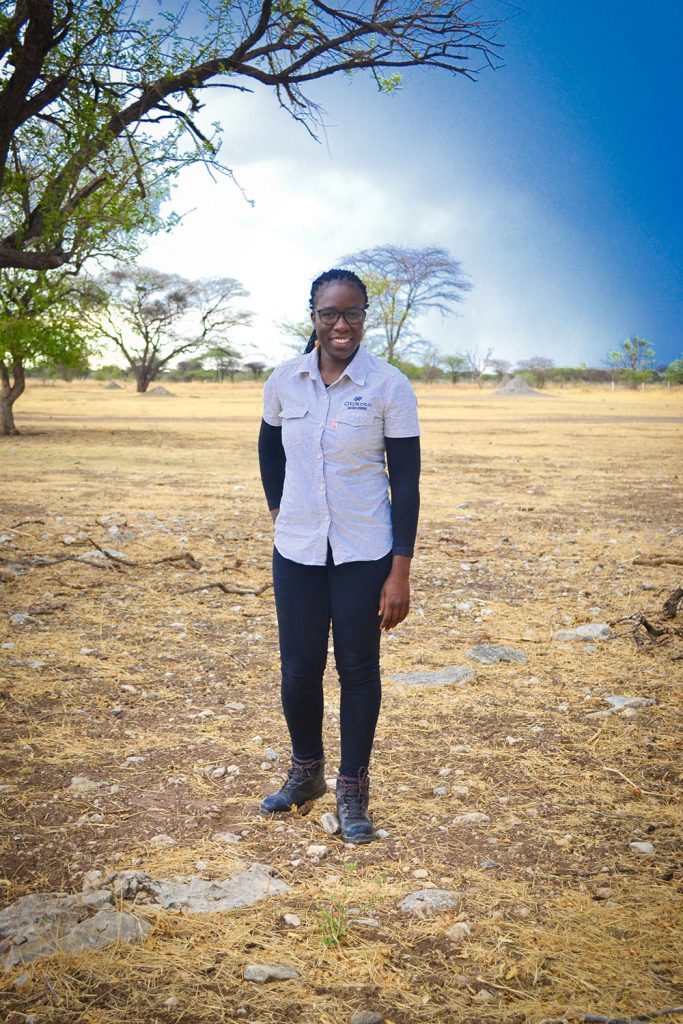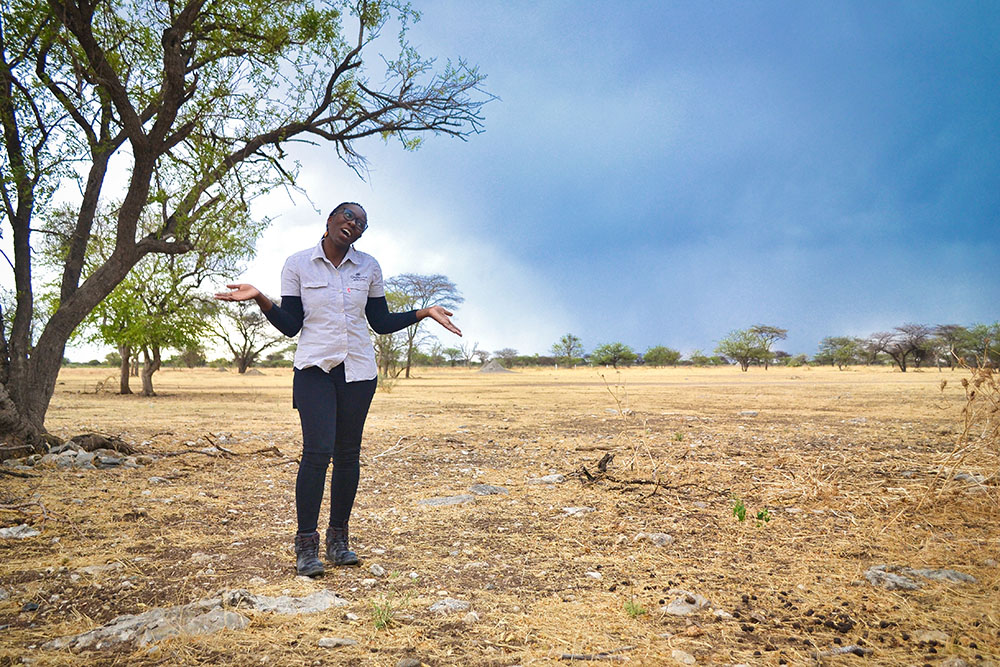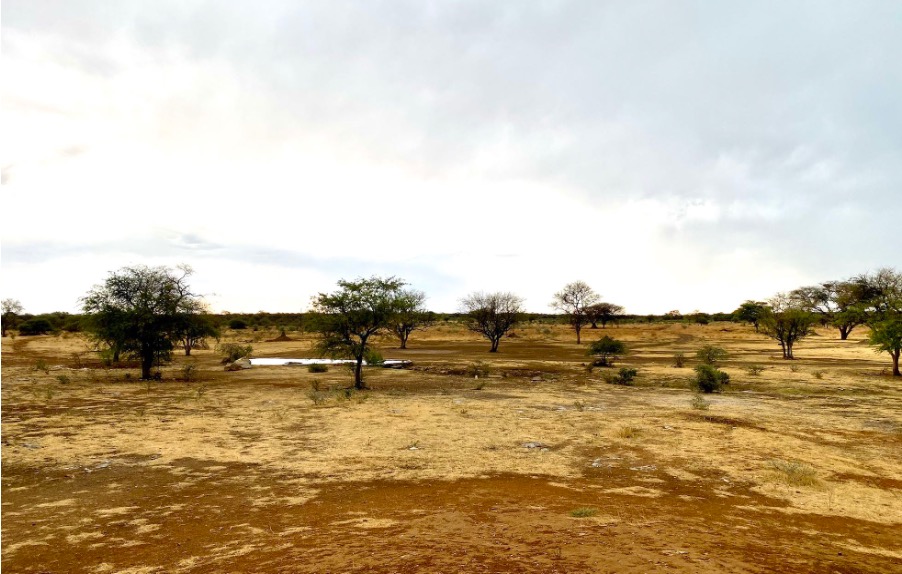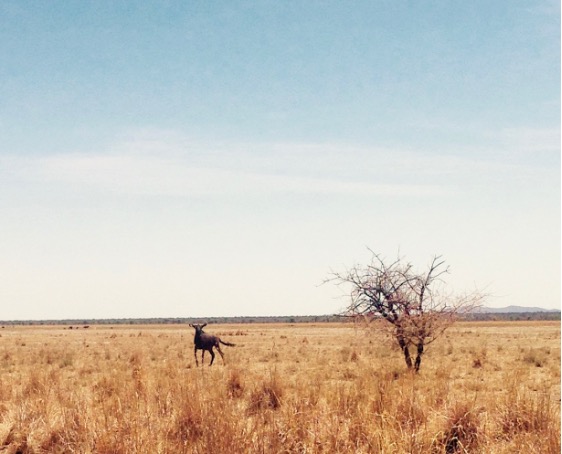A mine’s vision on the rehabilitation of degraded ecosystems in central Namibia
~
“For us, bush thinning is very important to get this area back to a functional ecosystem. The main reason we want to make it functional, is to ensure that wildlife have sufficient space and grazing. We inherited a system that wasn’t functional, so we are rewilding and aligning it to the vision that the company has for the Reserve” says Miya Kabajani, a Research Coordinator for B2Gold, based at their Otjikoto Mine in Central Namibia.
The mine is situated on what was previously cattle farmlands, and as Miya points out there was “a lot of overgrazing and bush encroachment” on the land. It affected the way the animals moved and what they ate. It also affected the type of plant species found on this land, as Miya and her research team would soon find out.

Using Science and Research
Miya started her career in conservation, after having studied Nature Conservation at the Namibia University of Science and Technology (NUST). Her passion for plants was evident, as she did her Master’s degree on “the recruitment of valuable woody species”. It wasn’t long before Miya joined B2Gold, at their Environmental Education centre. The centre is based adjacent to the B2Gold mine, on the Otjikoto Nature Reserve.
Through one of their partner institutions, NUST, the Education centre attracts environmental studies students each year. “We’ve been fortunate in that we’ve had students come out to do their internships with us. During this period, we would give them a project to work on a certain topic, and that (information) would feed back to our management plan.”
“This year we looked at grass, and aspects of the grass in areas that have been thinned and areas that have not. It was interesting to see the differences, in terms of grass species. There was diversity in terms of grass biomass and in terms of woody species density overall, it varied from the area that not been thinned.”
Miya an avid researcher notes, “that’s the beauty of research, not only observing but also being able to quantify. We could see the differences when we looked at the area, because the areas were just opposite each other, but we also looked at the details of how much grass species and biomass we had on either side. There was more on the side that was thinned. It goes to show you, that when you thin, you are creating space for the grass. When the areas are thick, it’s like putting an umbrella over the grass, not much happens there, it can’t see the light.”
“When you thin, you create space for the grass to come through, and that ultimately translates into more grazing. With us, we used to have the animals concentrate on the pan,” says Miya, referring to the open clay plain found on their land. “By this time of the year, it would be one big dust ball because almost all the vegetation would be gone. Last year we did a study and found that the animals have started moving through the areas we had thinned to the Northern part of the property. They didn’t do that before, and this reduces the impact on the pan because now they have different grazing options. You think you do one thing, but it translates into something else, the ripple effect of activity.”
Another interesting finding in their research according to Miya, was the change in grass species, especially after a veld fire moved through one of their camps. “We target mostly Black thorn and Sickle-bush (Acacia mellifera and Dichrostachys cinerea) since 2013. In 2018 just after the rains had started to come, we had a fire because of a power line that fell over. Over eighteen hectares burnt, just north of the pan. We used to have tall turpentine grass there, and animals don’t like that grass. But when we studied that area we found different types of grass and less turpentine grass. That combination of the area being thinned, and the burn caused that change.”

“What we’ve done has worked, we’ve seen successes, we’ve taken lessons from it and we are constantly learning. One of the things that we learnt was the importance of aftercare. It’s something that a lot of people overlook, and we were not an exception in that.”
Miya explains the process they have used, saying “we do bush thinning both manually and mechanically through contractors. We adhere to the forestry regulations, and apply for a permit before we start the thinning process. Also, on our property we have different habitats, thus we can’t use the same thinning process, because the southern part has a lot of rocky patches whereas the northern part has some sandy patches. We look at all the options and balance it out in terms of the conditions and the habitat.

Seeing an Increase in Wildlife Numbers
Miya explains that concentrating on land use and looking into bush control has not only been a successful endeavour but an important one. “We see our wildlife numbers increasing and with that, we need to increase the available habitat space for them.”

B2Gold’s vision for the future of this area, includes a rewilding project, as Miya explains, “One of our biggest projects is the creation of the Greater Waterberg Park, it’s a rewilding project to merge the B2Gold farms with the neighbouring farms through a corridor all the way to the Waterberg National Park. This would create one big park, a people’s park, basically one open system with free roaming wildlife. We are also looking at commercialising some of the activities to sustain the reserve going forward, after mine closure.”
In the meantime, the centre has many exciting research plans and projects, including one that focuses on succulents and could hold possibilities for future biomass projects. “I think looking at the industry itself, there is still a lot unexplored. We’ve explored charcoal, we are in the top five exporters of charcoal in the world. It would be interesting to see what else we could do” says Miya.
An avid botanist, Miya shares her delightful smile as she notes, “One other highlight is that we are very proud of our rehabilitation nursery as we have managed to plant over five thousand trees from seed within a year. We’ve even got ourselves a tree award from the Botanical Society.”
Further Sources:
Economics of Land Degradation Initiative: Benefits of bush control in Namibia.
De-bushing Advisory Service: Bush Control Manual.
NUST: Decision Support System on how to control bush thickening by Acacia Mellifera in Namibian savanna rangeland.
[wpfilebase tag=file id=141 /]
